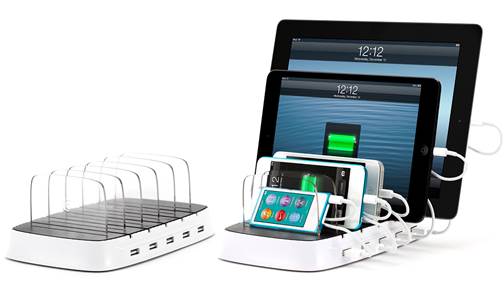A few short years ago, wireless was
simply a convenience feature to provide connectivity on campuses for students
and teachers. But now, with the advent of 1:1 and BYOD device strategies,
wireless has moved from being just a convenience into being the true primary
access layer for network connectivity.
The predicament
The mobility phenomenon is truly one of the
drivers of technology today. A few short years ago, wireless was simply a
convenience feature to provide connectivity on campuses for students who wanted
to sit outside while writing their term paper. Now, with the advent of all
these wireless devices, the requirement for mobility and wireless in motion,
and the lack of physical Ethernet ports on these devices, wireless has moved
from being just a convenience into being the true primary access layer for
network connectivity.

How
To Deploy A Wireless Network In Your School
As we prepare for this onslaught of
wireless mobility in schools, IT administrators are faced with more challenges
than ever before: How much bandwidth is enough? What types of devices might
show up? Today we hear that 72% of personal devices are Apple devices – but
what about next year? How can an IT administrator prepare for an unknown set of
devices, with unknown bandwidth and connectivity requirements, using only the
same number of resources, and still rest assured that he can confidently say
his network is secure, high performance, and ready for the next wave of new
technology especially gigabit Wi-Fi?
This is the BYOD predicament. Efforts to
allow students, teachers, administrators, and even the general public to bring
their own devices into schools to improve productivity and mobility are
countered by the worry that devices may not be secure, that workers may be
distracted by applications rather than using the devices for work activities,
and above all, that they place an overwhelming burden on the limited IT staff
for supporting and troubleshooting these unmanaged devices.

Today
we hear that 72% of personal devices are Apple devices but what about next
year?
The solution
Primary and secondary schools now require
wireless networks to fully realize the benefits of connectivity in the
classroom and make the most of ɪ:ɪ laptop programs. However, not all wireless
networks are created equal. The right wireless network must be easy to use and
manage, to avoid the need for teachers to become networking experts. It should
provide classroom-ready features that add to the educational experience instead
of detracting from it. It should enable centralized reporting, so cost/benefits
analysis can be performed at the administrative level. And the wireless network
must be affordable and scalable throughout buildings, campuses and districts,
so connectivity is ensured where required.

The
StudentManager application simplifies the process of bringing wireless devices
into the classroom
Aerohive Student Manager and Teacher View
products are essential to this solution. The Student Manager application
simplifies the process of bringing wireless devices into the classroom. The
product integrates with Pearson PowerSchool, which allows for automated
configuration of student rosters, classes, and teachers. For teachers, Student Manager’s
Teacher View enables computer carts to be specified by class and allows
teachers to create lesson plans that include websites and internal resources.
Both Student Manager and Teacher View
leverage Aerohive’s access points in the classroom, and are coordinated on the
back end via management functionality in Hive Manager. These applications are
completely device/OS-independent, making it easier to integrate this
functionality across a variety of wireless devices.
Front office
The Aerohive system is specifically
designed to recognize virtual desktop environments and allows districts to
enforce usage policies even when the user identity is authorized to use the
device. This means the network actually recognizes the device type, prioritizes
the VDI application running on that device, and routes the traffic to the
appropriate server, allowing even a wireless network that is loaded with
traffic to reliably deliver mission critical applications to the device running
the virtual desktop environment whether that be assessment data, students
records, or other highly-sensitive back-end district applications privy only to
certain faculty and administration. While the administrator’s device is capable
of running other applications, the corporate usage policy states that these
devices will only access the VDI server and/or specific SaaS applications on
the Internet. Aerohive’s infrastructure checks the identity of the user upon
login and enforces this usage policy on the specified device.
Classrooms
The same system that allows guests’ devices
to connect securely to the wireless network and to the Internet also
effortlessly integrates with existing district authentication services. Once a
user’s identity is understood and authorized, the Aerohive system identifies
the type of device in use and automatically enforces the district use policies
in place. For example, if a user is authorized to access all the applications
from his laptop, but the corporate use policy states that iPhones may only
access email, then this usage policy will be enforced on that user’s device.

The
same system that allows guests’ devices to connect securely to the wireless
network and to the Internet also effortlessly integrates with existing district
authentication services.
Guests access
With an Aerohive system, every wireless
client is secure, whether it be a parent attending a PTA meeting in the
cafeteria, a student-owned device in use during recess, or a guest lecture
wanting to share a video from the Internet on their laptop. To make this
possible, Aerohive has developed what they call Private Pre-Shared Key (PPSK)
security. This allows registered guests to receive the same encryption levels
that authorized employees have, without requiring complicated configurations to
back-end systems. Once a guest registers on the Aerohive guest portal, device
communication is encrypted and safe.